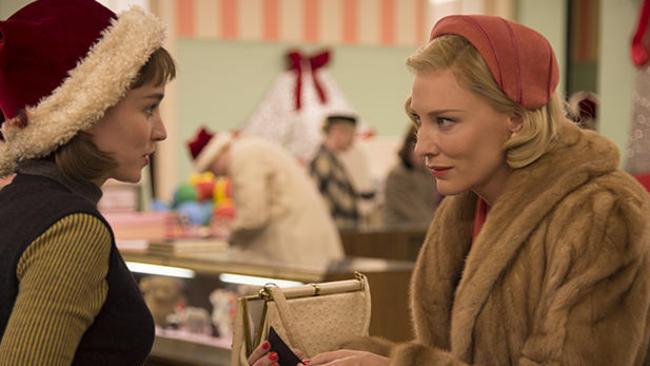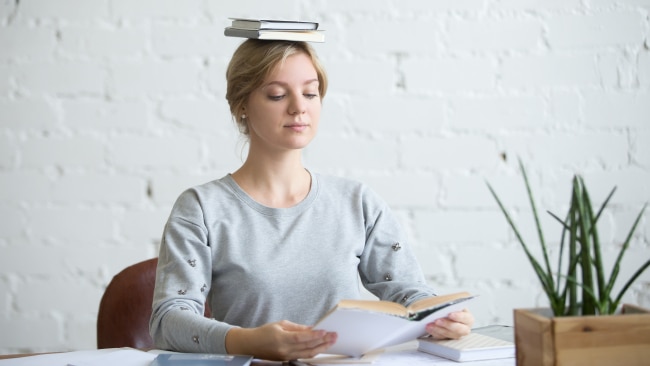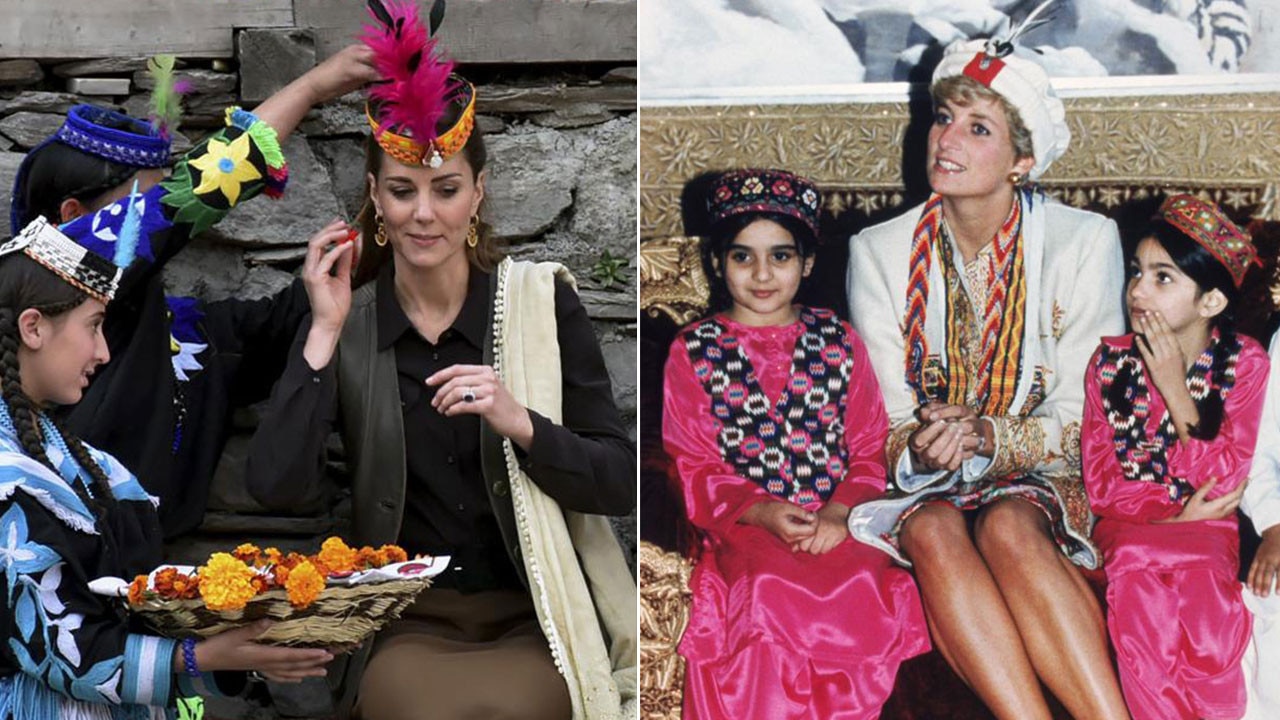Women in love (with each other)
As Cate Blanchett’s film about a lesbian affair is unveiled, sapphic love is becoming all the rage.

A groundbreaking Hollywood romance about a lesbian, Carol, wowed critics this week at Cannes. In one pivotal scene Carol, a 1950s housewife played by Cate Blanchett, leans towards her young lover, Therese, and tells her you never know why you are attracted to someone, “all you really know is you’re attracted or you’re not”.
This could be the anthem of the new generation of young women in Britain and America whom researchers have found are now more likely to report same-sex relationships than their male counterparts, overtaking them in the past five years in a sudden shift. It has taken the establishment, not to say parents, by surprise, but young women are used to it.
Their model, actress and singer heroines such as Cara Delevingne, Kristen Stewart, Rita Ora, Jessie J or Miley Cyrus are usually not inclined to define their sexuality but by the media they are romantically linked with partners of either sex. This has become so common that some young female celebrities are accused of playing with a “fake lesbian” phase purely to attract attention.
Cate Blanchett could not have been more on trend when giving an insight into her own sexuality at Cannes that was both audacious and slightly ambiguous. Producers have struggled for years to get the green light for Carol, a semi-autobiographical novel by Patricia Highsmith about a lesbian affair. Now Blanchett was asked the obvious question: had she ever had relationships with women?
“Yes, many times,” replied Blanchett, who has been married to the father of her five children for nearly two decades. This was an exciting thing for a major Hollywood star to say and Blanchett has now clarified her position, saying that she had relationships with women, yes, but added the clause that she had not had sex with them. “If you mean have I had sexual relations with women the answer’s ‘no’”, said Blanchett.
It is impossible to imagine any male star of her stature even venturing into this territory. In the course of researching this article, in talking to young women, parents and academics, this theme of a double-standard emerged. Yes, young women are now more confident than young men about experimenting with same-sex encounters, but this new development was founded on an old prejudice: a social double standard that expected women to “come in” as easily as they came out. It was “just a phase”, a male-serving porn-fantasy or frigidity.
“The rapport between two men or two women can be absolute and perfect,” wrote Highsmith in Carol, “and perhaps people want just this, as others want that shifting and uncertain thing that happens between men and women.”
Perhaps more women want both. Ever since Kinsey’s sex studies in the 1950s, researchers have found female homosexuality to be a minority sport compared with male. But the Earth has moved. In America the Public Religion Research Institute surveyed 2,000 people aged between 18 and 35. They were the “gayest” generation, read the headlines when the report came out in March, with 7 per cent identifying as gay or bisexual, higher than comparable surveys.
However, it’s young women who are driving the trend: the report states that they “are twice as likely as millennial men to say they are sexually attracted to someone of the same gender (14 per cent versus 7 per cent, respectively). Among millennial women who do not identify as lesbian or bisexual, 8 per cent say they are sexually attracted to other women.”
In Britain, something similar is going on. Professor Dame Anne Johnson of University College London published the equivalent British statistics in The Lancet in 2012, in a large-scale study that is repeated each decade. For the first time more British women than men reported same-sex experiences (12 per cent of women versus 8 per cent of men). Among men, age didn’t play a role, but among women there was a dramatic generational shift: the most likely group by far to say they had same-sex experiences were those aged between 16 and 25. In that generation, nearly one in five women claimed some kind of encounter with another woman.
“It was the first time a higher proportion of women than men were reporting same sex experiences,” said Johnson. “If you look at the behaviour of these women with same-sex partners very few of them are exclusively gay. They tend to have more opposite-sex partners too. They are more adventurous.”
It was impossible for Johnson to tell from the results quite what was behind this sudden boom in adventurousness, but she said that she had noticed among the young women in her life that their moral condemnation was now aimed more at infidelity than at homosexuality. “I’ve got teenage daughters. They are very concerned if A is cheating on B, but they are very relaxed about who they are in a relationship with.”
Megan (not her real name), a doctor who lives in London, has two children: a straight son and an 18-year-old daughter who had boyfriends but recently came home from university with a girlfriend. She has not come out as gay, says Megan, “she just said: ‘I’ve got a girlfriend now.’ She has not labelled herself as anything.”
“I definitely had very close friendships as a young woman,” says Megan. “But we wouldn’t have dreamt of exploring it in a sexual way. Now they would feel a bit lame if they didn’t try out that kind of thing. I think there may be an element of rebellion. Or perhaps you feel that as a parent: there is not much they can rebel against now, but you are the heterosexual role model and they have rejected it. There’s a residual sense they have looked at your life and said, ‘Noooo!’”
Megan also realised that she assumed it would be “a phase” with her daughter, which she wouldn’t if it were her son. “My daughter pointed out that people think that male bisexuals are basically gay and female bisexuals basically straight. I did find that was my own assumption as well, which was a bit shocking. With her new girlfriend. I am ashamed to say my instinct was it was a phase, which I never thought of with her boyfriends.”
There seems to be far less pressure on young women to define themselves, I tell her. “There is a real difference. The boys seem to come out and stay out. The girls seem much freer to bat backwards and forwards. That says something about our society. My daughter says a boy would not be troubled by sleeping with a girl who has slept with a girl, but a girl would be concerned that a man with gay experiences was not committed to her.”
Effi Mai is a nightclub impresario and the author of the London Unicorn style and clubbing blog. At 24 she says she is a “gold star” lesbian — “I’ve only slept with girls” — and finds all the talk of fashionable gay women to be far removed from the moment when she came out in a small Welsh village at 15. “Oh my god, it was like I’d murdered someone.”
Although the average age when gay people come out is still dropping, it remains hard to do. Ruby Tandoh, 23, who became a star when she competed on The Great British Bake Off television show, announced on Twitter last month that she had come out to her parents. It was a nerve-racking event helped, she said, by the moral support she received on the internet. She added for good measure a postscript referring to her alleged flirtation with the Bake Off judge Paul Hollywood: “For those who thought I fancied Paul Hollywood or that I’d ever bang him to get ahead — JOKE’S ON YOU, YOU MASSIVE MISOGYNISTS.”
Mai says that of course the media influences attitudes, but the influence of an elite group of models and singers has not yet made being a lesbian an easy or celebrated choice in much of Britain. “School was still vile. I had to get a fake boyfriend. If you’re in London you may find it relatively easy: you can sneak into Ruby Tuesdays.
In Wales you’re sneaking reads of Diva magazine off the internet and thinking: ‘There are people like me.’”
Homophobia is declining, though, and Mai thinks the culture is helping: “Grey’s Anatomy has a lesbian married couple and it’s just part of the story. But as for the club scene in London, yes that’s definitely more fluid. I do have friends who say, ‘I slept with a guy that night. I couldn’t be bothered to chat up a girl.’
“We don’t run ‘lesbian’ nights any more — the numbers kept dropping — so now we have nights where about a fifth are straight girls. The lesbians meet each other, buy cats and stay in watching CSI until the breakup. So now we call them ‘girl nights’.”
In Carol, Highsmith wrote what is regarded as the first lesbian novel with a happy ending, but its ending is ambiguous. We’re not quite sure who any of the female characters end up with and that makes the film and the novel very modern indeed.
“What was it to love someone, what was love exactly,” writes Highsmith, “and why did it end or not end? Those were the real questions, and who could answer them?”
The Times


